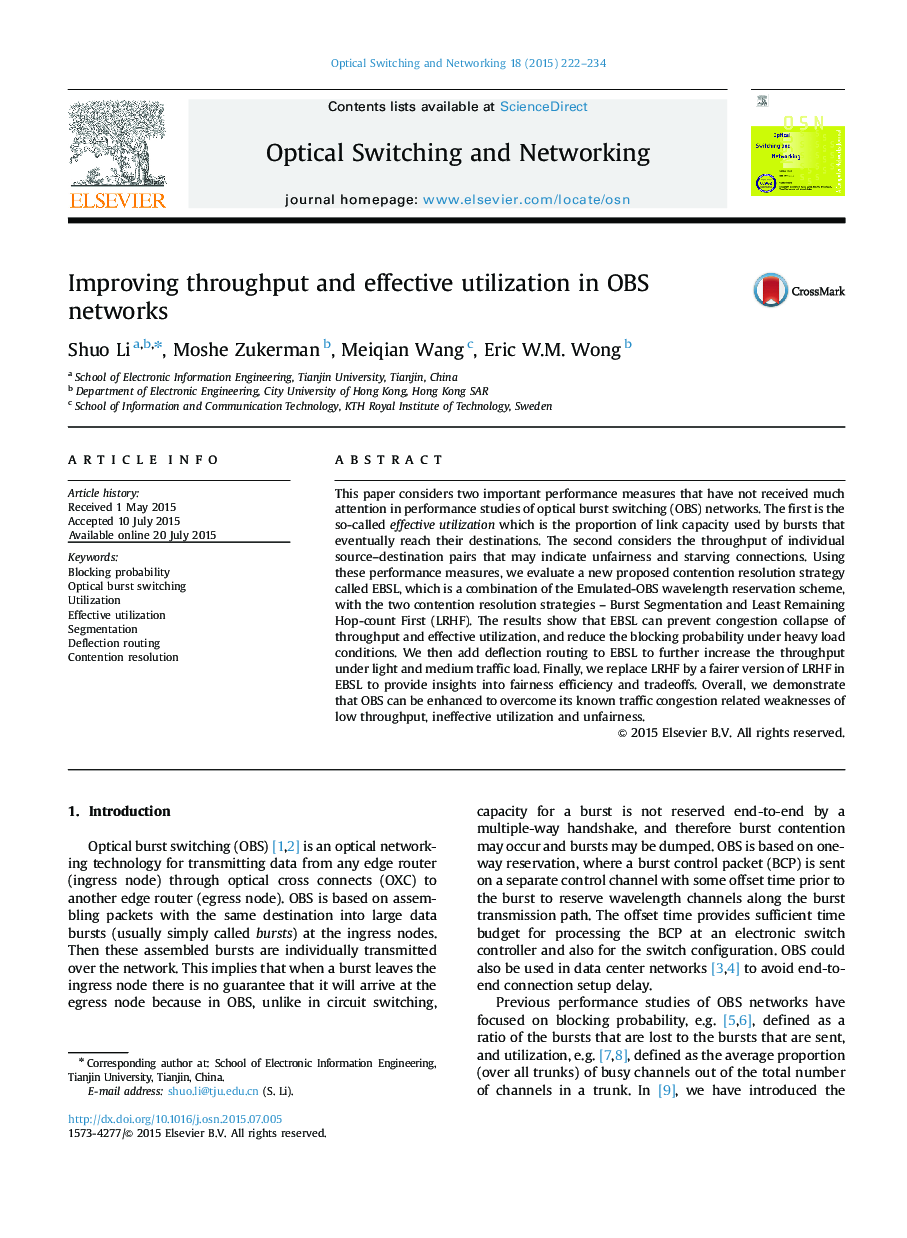| Article ID | Journal | Published Year | Pages | File Type |
|---|---|---|---|---|
| 464815 | Optical Switching and Networking | 2015 | 13 Pages |
This paper considers two important performance measures that have not received much attention in performance studies of optical burst switching (OBS) networks. The first is the so-called effective utilization which is the proportion of link capacity used by bursts that eventually reach their destinations. The second considers the throughput of individual source–destination pairs that may indicate unfairness and starving connections. Using these performance measures, we evaluate a new proposed contention resolution strategy called EBSL, which is a combination of the Emulated-OBS wavelength reservation scheme, with the two contention resolution strategies – Burst Segmentation and Least Remaining Hop-count First (LRHF). The results show that EBSL can prevent congestion collapse of throughput and effective utilization, and reduce the blocking probability under heavy load conditions. We then add deflection routing to EBSL to further increase the throughput under light and medium traffic load. Finally, we replace LRHF by a fairer version of LRHF in EBSL to provide insights into fairness efficiency and tradeoffs. Overall, we demonstrate that OBS can be enhanced to overcome its known traffic congestion related weaknesses of low throughput, ineffective utilization and unfairness.
